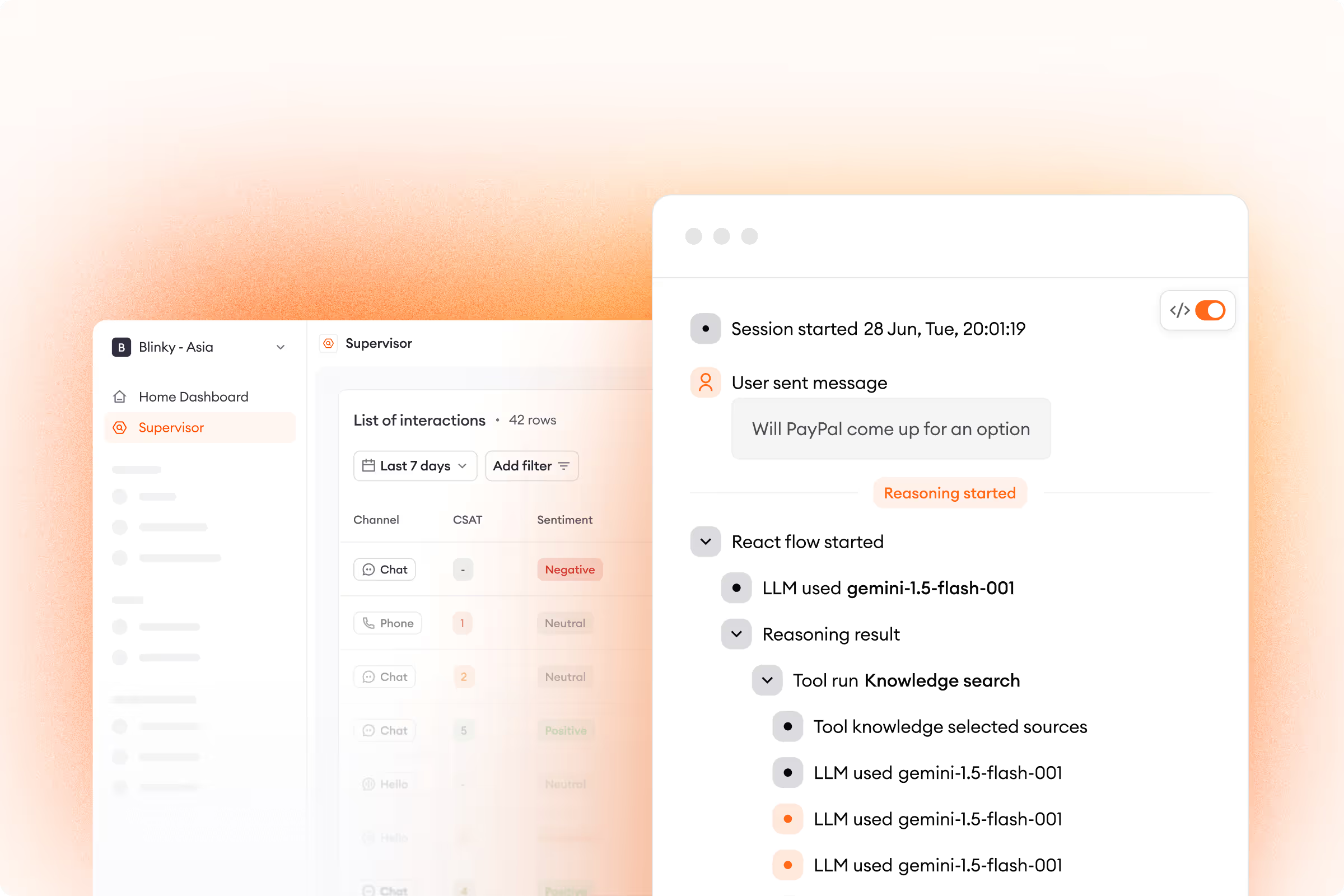Online shopping is evolving, and ecommerce managers are on a seemingly never-ending quest for strategies to bolster business growth.
One major thorn in their side? Rising customer acquisition costs (CAC). A recent study showed acquisition costs have increased by 222% in the last 8 years, highlighting just how expensive it can be to attract new customers.
As these costs climb, more businesses are prioritizing increasing customer lifetime value by building relationships with existing customers and making every interaction more profitable. And they’re searching for innovative ways to achieve this.
In steps excellent customer service.
With top-tier support in place, ecommerce companies are fostering meaningful customer relationships that drive repeat business and bolster their bottom line.
Knowing how to increase customer lifetime value (CLV) using customer service can be an absolute game changer. Let this blog post be your guide as we explain what CLV is, why it’s important, and how you can boost it with your service team.
What is customer lifetime value?
Customer lifetime value (CLV or LTV) is the total revenue a business can earn from a customer throughout the entirety of their relationship. CLV can be either historic, based on how much existing customers have already spent, or predictive, estimating how long future relationships will last along with their value.
How do you measure customer lifetime value?
Calculating customer lifetime value requires three metrics:
1. Average order value (AOV): What’s the value of your average sale?
2. Average customer lifespan: How long do customers actively do business with you? This is also known as your retention period.
3. Average number of customer transactions: How many times does the typical customer purchase from you? This is also known as purchase frequency.
With these three figures, you can calculate CLV with the following formula:
CLV = AOV x Customer lifespan x Number of transactions
.avif)
Here’s an example from ecommerce:
Say you run an online clothing store. Your average customer buys $20 worth of items each time they finalize a purchase. They stay with you for one year, completing one purchase per month during that time.
With this info, you can calculate your CLV as:
AOV: $20
Customer lifespan: 12 months
Number of transactions: 12
CLV = $20 x 12 x 12
CLV = $2,880

What is a good customer lifetime value?
To determine if you have a good customer lifetime value, it’s important to look at your CLV:CAC ratio. Simply put, this ratio measures the revenue you can expect to receive from a customer divided by the average expense of gaining a new customer.

In ecommerce, the industry benchmark for a good CLV:CAC ratio is 3:1, meaning that your business is earning 3x more than it’s spending in marketing on each customer.
But a higher CLV:CAC ratio isn’t always better. While a 4:1 split is considered excellent, a ratio of 5:1 usually indicates a high-growth business that’s actually under-investing in its marketing.
Why is customer lifetime value important?
Making CLV an important metric within your ecommerce growth strategy can help your business in several ways. Here are the top benefits online companies gain by focusing on increasing customer lifetime value:
1. Higher customer loyalty
When you invest in higher CLV, you’re nurturing relationships with existing customers, convincing them to stay loyal to your business over a longer period of time. This will likely contribute to a lower churn rate.
There’s also a better chance that satisfied customers will turn into brand advocates. Since shoppers are 22% more likely to trust recommendations from peers than from strangers, this gives brands access to free word-of-mouth marketing that’ll expand their customer base.
2. Greater cost savings & revenue generation
This one’s a twofer. By emphasizing increased CLV, businesses don’t have to sink more money into growing customer acquisition costs. Instead, they have more resources to pursue cost-effective marketing alternatives, like loyalty programs and other personalized marketing efforts.
But cost savings aren’t the only way CLV can promote better profit margins. With more loyal customers, you’re bound to generate more revenue as well — 43% of shoppers spend more with the brands they’re loyal to. Improved metrics like more repeat sales and even higher-value purchases mean you’ll enjoy heightened profitability.
3. An elevated customer experience (CX)
When focusing on growing CLV, you’re making sure existing customers know they’re valued and appreciated. Businesses are more likely to spot and remove any hurdles along the customer journey to guarantee the shopping experience is as frictionless as possible. Monitoring CLV also lets businesses pinpoint their ideal customer. Once they have that buyer profile down pat, they’re able to tailor each interaction to their specific needs, bringing shoppers an excellent customer experience.

As the figure above shows, the majority of a business’s customers fall into the profitable range. By adopting a CLV-centric ecommerce approach, you’ll be able to pinpoint which shoppers fit into your very profitable bracket and deliver positive experiences that are geared specifically toward them.
How to increase customer lifetime value with customer service
Ecommerce businesses can leverage their customer support to increase CLV with these 10 proven techniques:
1. Reduce response times
73% of shoppers say valuing their time is one of the most effective ways businesses can ensure customer satisfaction.
What can support teams do? Cut response and resolution times.
When customer questions get answered quickly and accurately, shoppers are far more likely to walk away happy with their online experience.
Using artificial intelligence (AI) solutions can be a simple yet effective way to accomplish this. Not only can AI chatbots deliver instant answers to the most common customer issues, but AI-powered platforms can also recognize queries that require a human agent and auto-assign tickets to the appropriate support rep.
.avif)
2. Upsell and cross-sell
Empowering customer service reps to upsell and cross-sell additional items to shoppers can give ecommerce brands a major boost to their CLV. By accessing customer data like age, location, or purchase history, agents can offer product advice and side-by-side comparisons. They’re then able to step in to suggest complementary items or upsells.
AI customer service solutions make it easier for businesses to recommend relevant products before shoppers complete a purchase. For instance, they can automatically inform buyers when they’re one item away from your free shipping threshold and recommend suitable products to complement their purchase, increasing both AOV and the total number of transactions.
3. Provide proactive support
Reaching out to customers proactively, whether through live chat or email marketing, can make customers feel valued and entice them to seek you out for repeat purchases. Letting shoppers know if an issue is occurring or helping them complete purchases whenever they appear stuck are effective ways to build higher customer retention and get shoppers to purchase more over time. Greeting them with automated chatbot messages that announce new releases or sales whenever they visit your webpage is another low-lift tactic to increase CLV.

4. Follow up with post-purchase communication
The buying journey doesn’t end after a customer goes through checkout. Engaging with shoppers after their purchase is complete can significantly reduce churn and enhance customer relationships. This can be done through email messages that remind them about loyalty programs, offer incentives for future purchases, and ask them for feedback on how they like their purchase or to leave a review.
5. Listen to customer feedback
Gathering and acting on customer feedback is essential for removing roadblocks along the customer journey and improving the overall checkout process. Make sure customers see that you’re addressing their top concerns (by updating product descriptions, making your site more user-friendly, etc.) so they’re satisfied with their experience and want to return for more.
When you identify issues as quickly as possible, you also prevent customer comments from appearing on your public channels as negative reviews. On the contrary, you’re only increasing your odds of collecting more positive reviews.
6. Offer omnichannel support
Omnichannel shoppers have a 30% higher CLV than those who shop on only one channel, so bringing customers consistent support across all touchpoints is crucial. Ensuring buyers receive a seamless customer journey over channels like live chat, email, SMS, and social media can produce a major uptick in purchases.
Omnichannel service starts with making sure each channel is fully integrated with your knowledge base, so customers who contact you get the same answers as what’s on your FAQ pages, how-to guides, and video tutorials. With 87% of shoppers expecting to get the same high-quality support no matter where they reach out, ecommerce brands that successfully go omnichannel will see customer satisfaction (CSAT) scores, net promoter scores (NPS), and CLV rise.
“Omnichannel support is a huge change. Every aspect of it. In terms of where you sell — is it only Amazon, is it your website, is it Instagram, Facebook, TikTok Shop? Be where your customers are, and remember to keep the experience personalized based on the channel…Customers are everywhere, and you probably aren’t — yet.”
-Maja Schaefer, Zowie CEO
.avif)
7. Personalize customer interactions
By creating customer service experiences that keep the personal touch intact, ecommerce companies are able to deepen connections with shoppers, which in turn encourages customers to complete more purchases. After all, 91% of consumers are more likely to buy from businesses that offer a personalized CX.
Moving beyond one-size-fits-all responses, businesses can use customer data to tailor conversations based on shopper preferences and behavior. Remembering past issues for faster resolution, transferring customers to their favorite agent (so nobody needs to repeat themselves over and over), and addressing them by name are all effective steps support teams can take — and steps that AI can automate at scale.
This level of personalization facilitates in-depth, high-value conversations that encourage more repeat business down the line.
8. Recoup lost opportunities
If a shopper’s unable to complete a purchase — whether their desired item is out of stock, they can’t navigate through checkout, etc. — customer service teams can do much more than tell them I’m sorry. Agents have numerous tools at their disposal to regain customers who are about to churn.
Automation tools can connect users with qualified product experts, recommend alternative products (maybe throwing in a discount to make the offer more appealing), or guide shoppers through the checkout process.They can also ping customers whenever products become available to prevent any potential loss in total revenue.
Never settling for I’m sorry demonstrates a commitment to customer satisfaction that shoppers are likely to appreciate — and reward.
9. Implement loyalty programs
When trying to increase CLV, why not throw in some tangible perks for customers to sweeten the pot? Introducing rewards programs that offer real value can turn an average customer into a long-term supporter.
You can start out small — something as simple as a Happy birthday greeting and promotion code when they enter your website can go a long way. When you’re ready to take your program up a level, set up a customer community where support agents can give out exclusive incentives for referrals or future purchases.
10. Streamline the customer journey
Creating a pleasant, hassle-free shopping experience is vital to bringing customers back to your online store. Your customer service team is equipped to remove many of the pain points shoppers may face, such as problems at checkout and issues with shipping.
Moreover, if your products require an onboarding process or learning curve, your agents are uniquely placed to offer hands-on assistance, even before a purchase is completed. By reducing any friction related to buying or using your products, support teams can craft a better customer experience that keeps shoppers coming back.
Increase your customer lifetime value with Zowie
Incorporating the above strategies into your customer service framework can bring about substantial improvements to your CLV. By upgrading your customer support, you’re not just investing in metrics like CLV — you’re laying the foundation for long-term ecommerce success.
Make Zowie your partner in this journey. Our AI-powered customer service suite is custom-built for ecommerce businesses looking to grow.
.avif)
.avif)
.avif)






